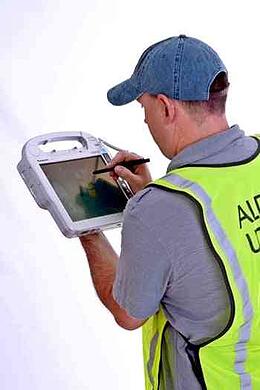Eight Rules for Successful Software Implementation
 After all the homework is done, after you have researched, specified and purchased a joint use management software solution, what’s next? Implementation. It is a scary word: the culmination of all your company’s hard work to make sure you are getting a solution that will solve your joint use management issues and make lives and jobs easier. Fortunately, implementing asset management software is not too different than implementing any other type of large-scale software solution. There is a lot of precedence, and a lot of good advice out there to help. But who has time to search the web? You have software to put in place, employees to train, utility poles to audit and attachers to bill. We have compiled eight critical tips for implementing your new joint use management program that should get you up and running quickly and keep you running successfully long into the future.
After all the homework is done, after you have researched, specified and purchased a joint use management software solution, what’s next? Implementation. It is a scary word: the culmination of all your company’s hard work to make sure you are getting a solution that will solve your joint use management issues and make lives and jobs easier. Fortunately, implementing asset management software is not too different than implementing any other type of large-scale software solution. There is a lot of precedence, and a lot of good advice out there to help. But who has time to search the web? You have software to put in place, employees to train, utility poles to audit and attachers to bill. We have compiled eight critical tips for implementing your new joint use management program that should get you up and running quickly and keep you running successfully long into the future.
-
Take a good look at your operations—and your choice.
If you have not already done a thorough audit of your asset management needs, now is the time. This is your last chance to fine-tune your software choice to make sure what you are getting is exactly what you need. A solution that only solves half your problems is not a good bargain at any price.
-
Rally the troops.
The most important factor in your software implementation is your employees—the software’s end users. People will make or break the success of any new initiative, and frankly, change is scary. Make certain to hear their concerns, answer their questions, and most importantly, help them feel involved or risk the consequences—and potential backlash.
-
Ask yourself: automate or customize?
The software you have chosen has a variety of processes built in. Look at your existing business processes and see how they match with these already established protocols. Gaps must be dealt with to make sure things do not veer off track, but be wary of simply customizing everything. Some embedded processes could be more efficient, more effective, and make things run more smoothly than ever before. Do not automatically close the door on using them as is.
-
Partner with your software provider.
The company that wrote your software and especially your training solution can be your best ally in implementation. Stay involved throughout the process and monitor progress closely throughout the project. Agree upon the expected results, costs and implementation time frame. This will ensure the project meets everyone’s expectations.
-
Find your champions.
Having a single, strong internal champion for your implementation project is vital to keeping the transition running smoothly and bridging the gap between your implementation vendor and users. Choose wisely however, this person will not only shepherd the implementation and training plans, but will also be a cheerleader in the culture change required to make the whole process a success.
-
Check your data.
Bad data in a new system equals a bad implementation. Ensure the data you have entered into your new software is accurate, or you risk both user frustration and getting the most out of your new tool. For utility pole owners, this means conducting a thorough field inventory of each and every asset you own to catalog pole location, age, condition, attachers and more.
-
Test early and often.
One way to help end users take ownership of the new software system is to utilize them as testers during and after implementation. Simply, these people know the most about what is needed and what might not be up to par, and should be encouraged to share their thoughts during the process. After implementation, conducting ongoing user groups can also be valuable in enhancing the utilization of the system’s capabilities going forward.
-
Train throughout the process.
Remember that training does not stop once your software comes online. While pre-implementation training is vital to helping you work out the kinks, get processes nailed down and ensure all users are up to speed, continual training helps keep everything working smoothly in the long run. The issues that arise on day one are not the ones that will pop up weeks down the road. Ongoing education makes sure everyone is on their game and continually working toward improving the program’s outcome.

Comments